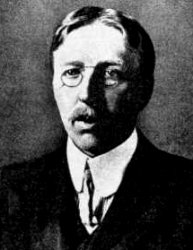Scribble Kids traveled to France and learned about art, history and culture!
Here are some of my students (with signed photo releases) working hard on their projects 

Hard at work!

Coloring a ‘Rose Window’
We learned about the Eiffel tower and Post-Impressionism today and studied a painting by Georges Seurat of the Eiffel Tower, which you can see below.
 Eiffel Tower, by Georges Seurat
Eiffel Tower, by Georges Seurat
We began our own Eiffel towers with a guided drawing in oil pastels.

Eiffel Tower Beginning Sketch
Then we added color mixing ‘dots’ just like Georges Seurat’s paint strokes. This created optical color mixing! Here are some of my student’s final art.. things got busy so I wasn’t able to photograph everything, unfortunately:

Eiffel Tower by Jeffrey, age 7

Eiffel Tower by Emelia, age 6

Eiffel Tower by Katie, age 7

Eiffel Tower by Samantha

Eiffel Tower by Gabby, age 6

Eiffel Tower by Avery, age 6

Eiffel Tower by Vivian, age 5

Eiffel Tower by Anne, age 6
We also worked on French poodles! Class was so busy I only got one photograph. Only half done here, but VERY cool!!

Poodle in progress
So cute and fluffy!
Here is the recipe the children sampled of French yogurt cake. It’s very easy to make.
French Yogurt Cake (Gateau au Yaourt)
Flour, baking powder, salt, sugar, lemon, Greek yogurt, vegetable oil, eggs, vanilla, butter
1 1/2 cups all-purpose flour
2 teaspoons baking powder
3/4 teaspoon kosher salt
1 cup sugar
1 tablespoon finely grated lemon zest
3/4 cup whole-milk Greek yogurt
1/2 cup vegetable oil
2 large eggs
1/2 teaspoon vanilla
Preheat oven to 350 degrees F.
Coat a standard (8 1/2 x 4 1/4″) loaf pan with nonstick vegetable oil spray. Dust with flour; tap out excess.
Whisk 1 1/2 cups all-purpose flour, 2 tsp. baking powder and the kosher salt in a medium bowl.
Using your fingers, rub 1 cup sugar with the lemon zest in a large bowl until sugar is moist. Add the yogurt, vegetable oil, eggs and vanilla; whisk to blend. Fold in dry ingredients just to blend.
Pour batter into prepared pan; smooth top. Bake until top of cake is golden brown and a tester inserted into center comes out clean, 50 to 55 minutes. Let cake cool in pan on a wire rack for 15 minutes. Invert onto rack; let cool completely.
The post Scribble Kids France appeared first on Scribble Kids.
By Max Saunders
This year’s television adaptation of Parade’s End has led to an extraordinary surge of interest in Ford Madox Ford. The ingenious adaptation by Sir Tom Stoppard; the stellar cast, including Benedict Cumberbatch, Rebecca Hall, Alan Howard, Rupert Everett, Miranda Richardson, Roger Allam; the flawlessly intelligent direction by award-winning Susanna White, have not only created a critical success, but reached Ford’s widest audience for perhaps fifty years. BBC2 drama doubled its share of the viewing figures. Reviewers have repeatedly described Parade’s End as a masterpiece and Ford as a neglected Modernist master. Those involved in the production found him a ‘revelation’, and White and Hall are reported as saying that they were embarrassed that their Oxbridge educations had left them unaware of Ford’s work. After this autumn, fewer people interested in literature and modernism and the First World War are likely to ask the question posed by the title of Alan Yentob’s ‘Culture Show’ investigation into Ford’s life and work on September 1st: “Who on Earth was Ford Madox Ford?”

Sylvia and Christopher Tietjens, played by Rebecca Hall and Benedict Cumberbatch in the BBC2 adaptation of Parade's End.
It’s a good question, though. Ford has to be one of the most mercurial, protean figures in literary history, capable of producing violent reactions of love, admiration, ridicule or anger in those who knew him, and also in those who read him. Many of those who knew him were themselves writers — often writers he’d helped, which made some (like Graham Greene) grateful, and others (like Hemingway) resentful, and some (like Jean Rhys) both. So they all felt the need to write about him — whether in their memoirs, or by including Fordian characters in their fiction. Ford himself thought that Henry James had based a character on him when young (Merton Densher in The Wings of the Dove). Joseph Conrad too, who collaborated with Ford for a decade, is thought to have based several characters and traits on him.
I’d spent several years trying to work out an answer that satisfied me to the question of who on earth Ford was. The earlier, fairly factual biographies by Douglas Goldring and Frank MacShane had been supplanted by more psycho-analytic studies by Arthur Mizener and Thomas C. Moser. Mizener took the subtitle of Ford’s best-known novel, The Good Soldier, as the title of his biography: The Saddest Story. He presented Ford as a damaged psyche whose fiction-writing stemmed from a sad inability to face the realities of his own nature. Of course all fiction has an autobiographical dimension. A novelist’s best way of understanding characters is to look into his or her own self. But there is an element of absurdity in diagnosing an author’s obtuseness from the problems of fictional characters. This is because if writers can make us see what’s wrong with their characters, that means they understand not only those characters, but themselves (or at least the traits they share with those characters). John Dowell, the narrator of The Good Soldier, appears at times hopelessly inept at understanding his predicament. His friend, the good soldier of the title, Edward Ashburnham, is a hopeless philanderer. If Ford saw elements of himself in both types, he had to be more knowing than them in order to show them to us. And anyway, they’re diametrically opposed as types.
 Ford’s psychology needs to be approached from a different angle. Rather than seeing his fiction as displaying symptoms that give him away, what if it is diagnostic? What if, rather than projecting wishful fabrications of himself, he turns the spotlight on that process of fabrication itself — on the processes of fantasy that are inseparable from our subjectivities? To answer the question of who Ford was, we have to look at the ways his work explores how we understand ourselves through stories: the stories that are told to us, the stories we tell ourselves; the myths and histories and anecdotes that populate our imaginations. Where Moser had concentrated on what he called The Life in the Fiction of Ford Madox Ford — trying to identify biographical markers in episodes in novels — I found myself in quest of ‘the fiction in the life’.
Ford’s psychology needs to be approached from a different angle. Rather than seeing his fiction as displaying symptoms that give him away, what if it is diagnostic? What if, rather than projecting wishful fabrications of himself, he turns the spotlight on that process of fabrication itself — on the processes of fantasy that are inseparable from our subjectivities? To answer the question of who Ford was, we have to look at the ways his work explores how we understand ourselves through stories: the stories that are told to us, the stories we tell ourselves; the myths and histories and anecdotes that populate our imaginations. Where Moser had concentrated on what he called The Life in the Fiction of Ford Madox Ford — trying to identify biographical markers in episodes in novels — I found myself in quest of ‘the fiction in the life’.
Compared to some of the canonical modernists like Joyce or Eliot, Ford is unusual in writing so much about his own life — a whole series of books of reminiscences. They’re full of marvelous stories. Take the one with which he ends his book celebrating Provence. He describes how, when he earned a sum of money during the Depression, he and Janice Biala decided it was safer to cash it all rather than trust to failing banks. They visit one of Ford’s favourite towns, Tarascon on the Rhone. Ford has entrusted the banknotes to Biala. “I am constitutionally incapable of not losing money,” said Ford. But as they cross the bridge, the legendary mistral starts blowing:
And leaning back on the wind as if on an upended couch I clutched my béret and roared with laughter… We were just under the great wall that keeps out the intolerably swift Rhone… Our treasurer’s cap was flying in the air… Over, into the Rhone… What glorious fun… The mistral sure is the wine of life… Our treasurer’s wallet was flying from under an armpit beyond reach of a clutching hand… Incredible humour; unparalleled buffoonery of a wind… The air was full of little, capricious squares, floating black against the light over the river… Like a swarm of bees: thick… Good fellows, bees….
And then began a delirious, panicked search… For notes, for passports, for first citizenship papers that were halfway to Marseilles before it ended… An endless search… With still the feeling that one was rich… Very rich.
“I hadn’t been going to do any writing for a year,” mused Ford, recognising what an unlikely prospect it was. “But perhaps the remorseless Destiny of Provence desires thus to afflict the world with my books….” Yet for all the wry cynicism of this afterthought Biala remembered that “Ford was amused for months at the thought that some astonished housewife cleaning fish might have found a thousand-franc note in its belly.”
Ford’s stories, for all their playfulness, also earned him notoriety for the liberties they took with the facts. Indeed, Ford courted such controversy, writing in the preface to the first of them, Ancient Lights, in 1911:
This book, in short, is full of inaccuracies as to facts, but its accuracy as to impressions is absolute [....] I don’t really deal in facts, I have for facts a most profound contempt. I try to give you what I see to be the spirit of an age, of a town, of a movement. This can not be done with facts. (pp. xv-xvi)
He called his method Impressionism: an attention to what happens to the mind when it perceives the world. Ford is the most important analyst in English of Impressionism in literature, not only elaborating the techniques involved, but defining a movement. This included writers he admired like Flaubert, Maupassant and Turgenev, as well as his friends James, Conrad, and Crane. He also used the term to cover writers we now think of as Modernist, such as Rhys, Hemingway, or Joyce. Though most of these writers were resistant to the label, they wrote much about ‘impressions’ and their aesthetic aims have strong family resemblances.
One feature that sets Ford’s writing apart is his tendency to retell the same stories, but with continual variations. This creates an immediate problem for a literary biographer wanting to use the subject’s autobiographical writing to structure the narrative upon. Which version to use? Which to believe? They can’t all be true. And their sheer proliferation and multiplicity shows how he couldn’t tell a story about himself without it turning into a kind of fiction. In one particularly striking example, which Ford tells at least five times, he is taking the train with Conrad to London to take to their publisher corrected proofs of their major collaborative novel, Romance. Conrad is obsessively still making revisions, and because he’s distracted by the jolting of the train, he lies down on his stomach so he can correct the pages on the floor. As the train pulls into their London station, Ford taps Conrad on the shoulder. But Conrad is so immersed in the world of Cuban pirates, says Ford, that he springs up and grabs Ford by the throat. Ford’s details often seem too exaggerated for some readers. Would Conrad really have gone for his friend like that? Would he really have hazarded his city clothes on a train carriage floor? The fact that the details change from version to version shows how fluid they are to Ford’s imagination, but there’s at least a grain of plausible truth. Here it’s the power of literature to engross its readers, so that one could be genuinely startled when interrupted while reading minutely. So, as with many of Ford’s stories, it’s a story about writing, writers, and what Conrad called “the power of the written word, to make you hear, to make you feel… before all, to make you see.” And perhaps one of the things Ford wants us to see in this episode is how any aggression between friends who are writers needs to be understood in that context — as motivated as much by their obsession with words, as by any personal hostilities.
That is why a writer’s life — especially the life of a writer like Ford — is a dual one. As many of them have observed, writers live simultaneously in two worlds: the social world around them, and world they are constantly constructing in their imaginations. Impressionism seemed to Ford the method that best expressed this:
I suppose that Impressionism exists to render those queer effects of real life that are like so many views seen through bright glass — through glass so bright that whilst you perceive through it a landscape or a backyard, you are aware that, on its surface, it reflects a face of a person behind you. For the whole of life is really like that; we are almost always in one place with our minds somewhere quite other.
Ford’s life was dual in another important way, though. Like many participants, he felt the First World War as an earthquake fissure between his pre-war and post-war lives. It divided his adult life into two. His decision to change his name (after the war, which he had endured with a German surname), and to change it to its curiously doubled final form, surely expresses that sense of duality. Ford was in his early forties when he volunteered for the Army — something he could easily have avoided on account not only of his age, but of the propaganda writing he was doing for the Government. His experience of concussion and shell-shock after the Battle of the Somme changed him utterly, and provided the basis for his best work afterwards. Though he wrote over eighty books, most of them with brilliance and insight, two masterpieces have stood out: The Good Soldier, which seems the culmination of his pre-war life and apprenticeship to the craft of fiction, and then the Parade’s End sequence of four novels, which drew on his own war experiences to produce one of the great fictions about the First World War, or indeed any war.
Max Saunders is Director of the Arts and Humanities Research Institute and Professor of English and Co-Director at the Centre for Life-Writing Research at King’s College London. He is the author of Ford Madox Ford: A Dual Life, editor of the Oxford World’s Classic edition of The Good Soldier, and editor of Some Do Not… (the first volume of Ford’s series of novels Parade’s End).
Subscribe to the OUPblog via email or RSS.
Subscribe to only literature articles on the OUPblog via email or RSS.
View more about The Good Soldier on the 

View more about Ford Madox Ford: A Dual Life on the 

Image credits: Still from BCC2 adaption of Parade’s End. (Source: bbc.co.uk); Portrait of Ford Madox Ford (Source: Wikimedia Commons).





















